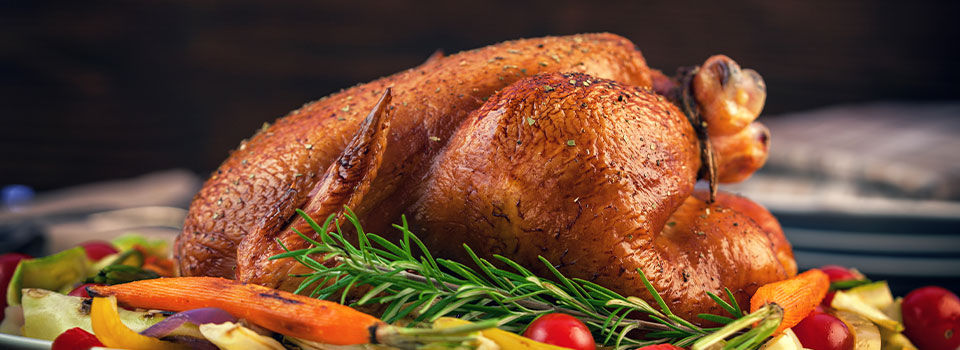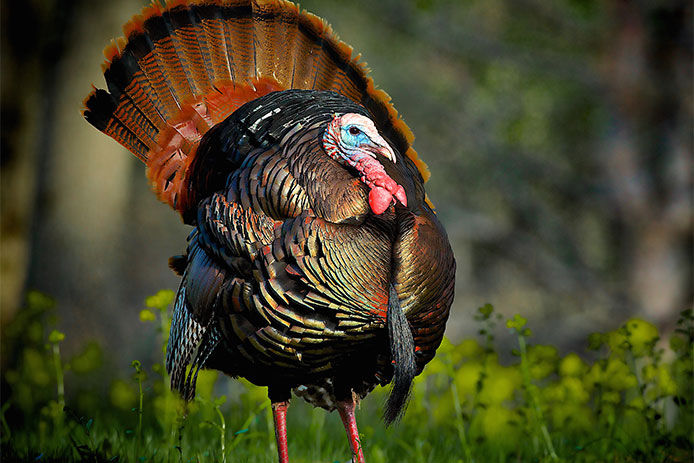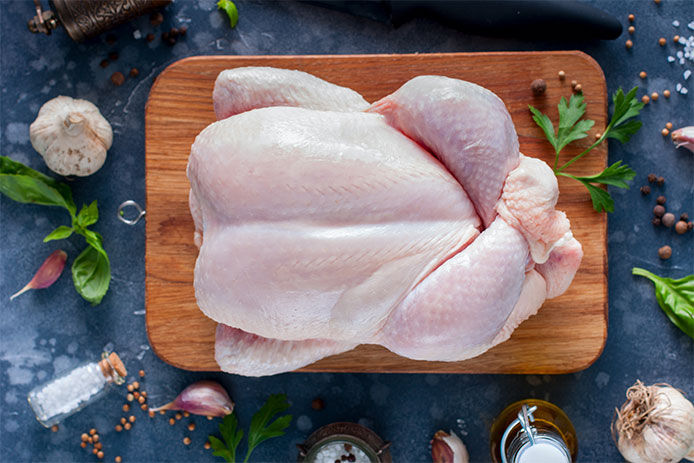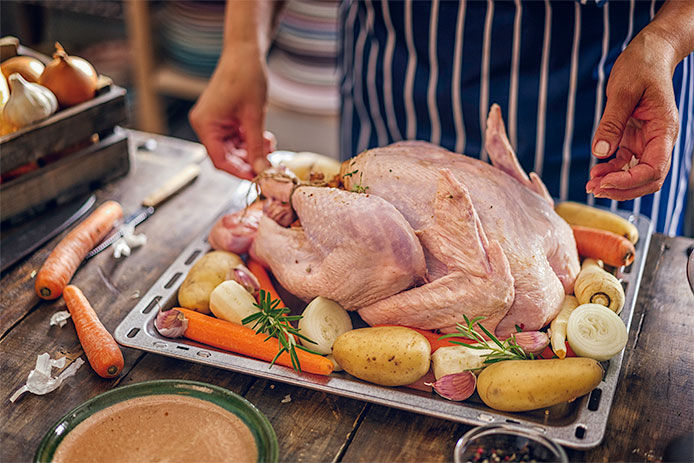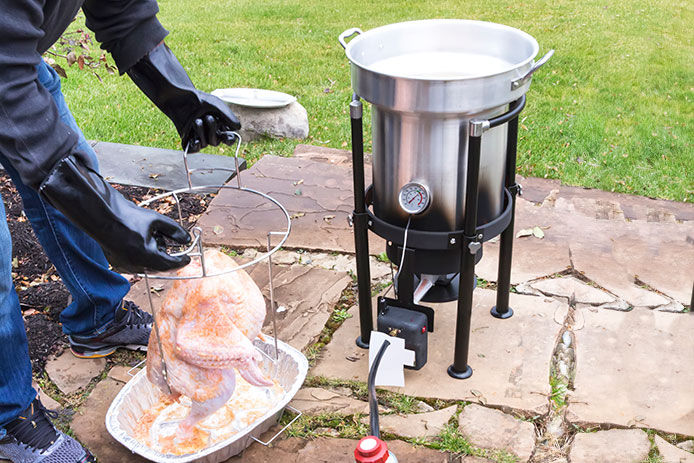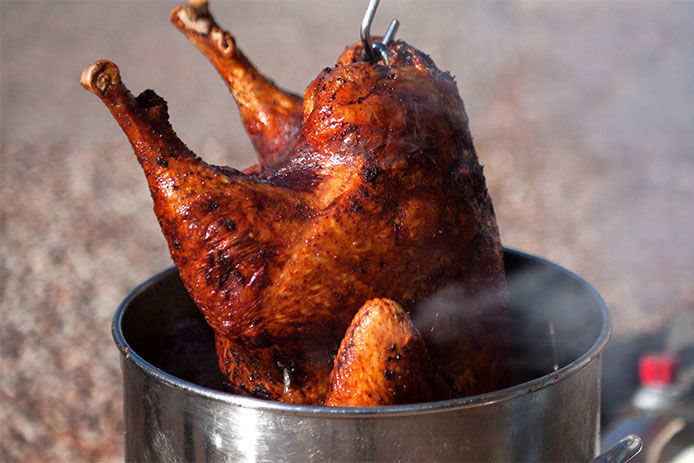Dress It up and Make the Bed
Start by adding a layer of aromatic vegetables to the bottom of your roasting pan. This will create a natural roasting rack for your bird to lay on. Lifting the turkey off the bottom of your pan increases hot air circulation, making it crispy all over. Add a little color to the inside of your turkey by stuffing it with cut onions, carrots, and celery, along with some rosemary sprigs and fresh sage.
Tie It up and Season
Once you've stuffed that beautiful bird, show off some culinary skills and tie up the turkey's legs together with some kitchen twine. This will help create a tight professional looking package. Season the outside of the turkey by rubbing it with butter or oil. Add some salt and pepper, and your bird is ready for the tanning bed (AKA your oven).
Cooking Time
Put the oven rack in the lowest position and preheat to 350 degrees Fahrenheit (F). Some frozen turkeys will come with a thermometer already inserted into the bird, which will pop up when the internal temperature has reached 165 degrees. If your bird did not come with a thermometer check the temperature once cooking time is up to ensure a minimum temperature of 165 degrees. The average recommended cooking time is about 15 minutes per pound. Of course, if your turkey is still frozen, it may take a little longer. If you’re using a frozen turkey, we recommend defrosting it completely before baking. The USDA recommends thawing a frozen turkey in the refrigerator. This may take some time, so plan accordingly. You’ll need to let your bird defrost for about a full day for every 4-5 pounds. So, if your turkey weighs 16 pounds, plan to let it defrost for about 4 days prior to cooking.
